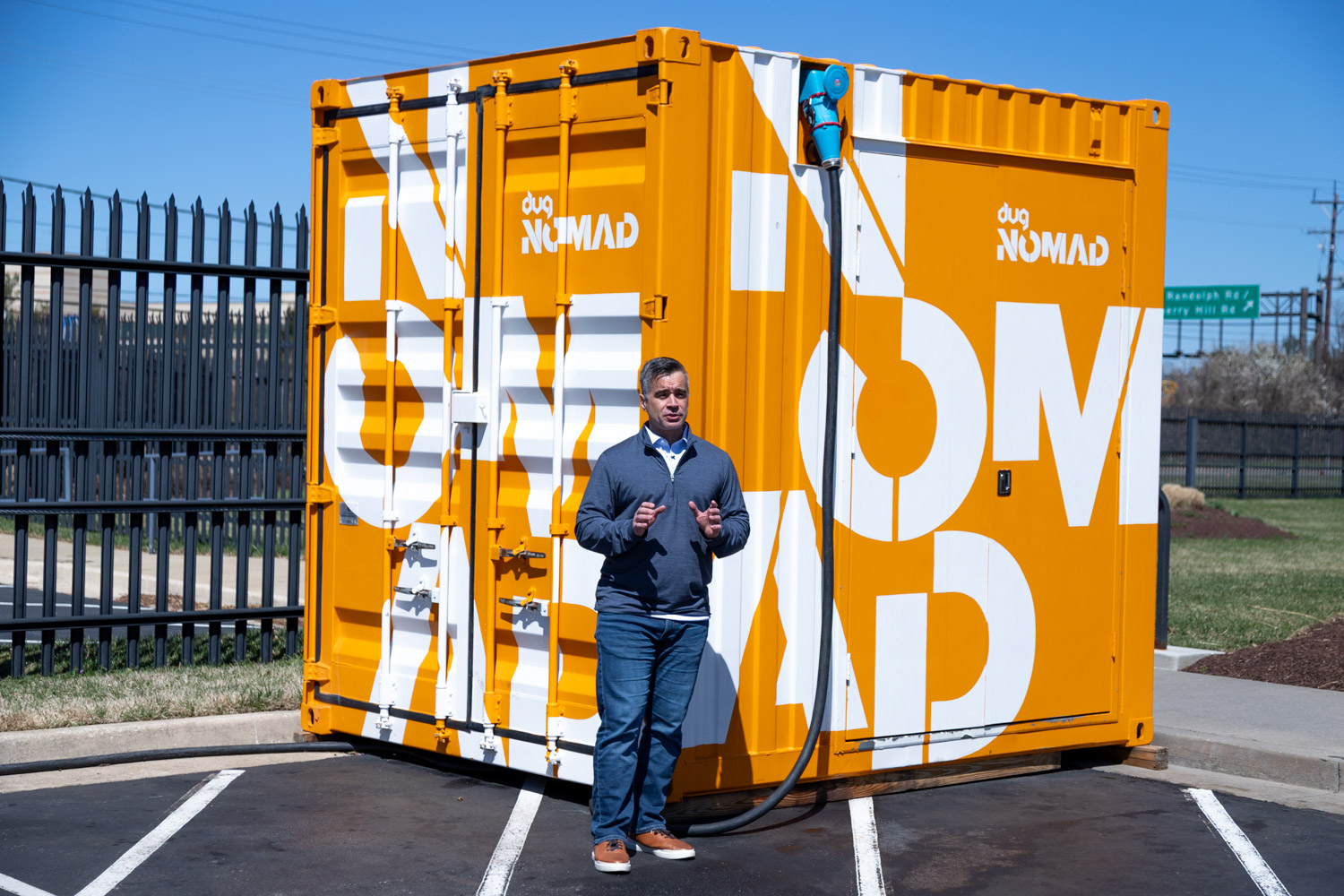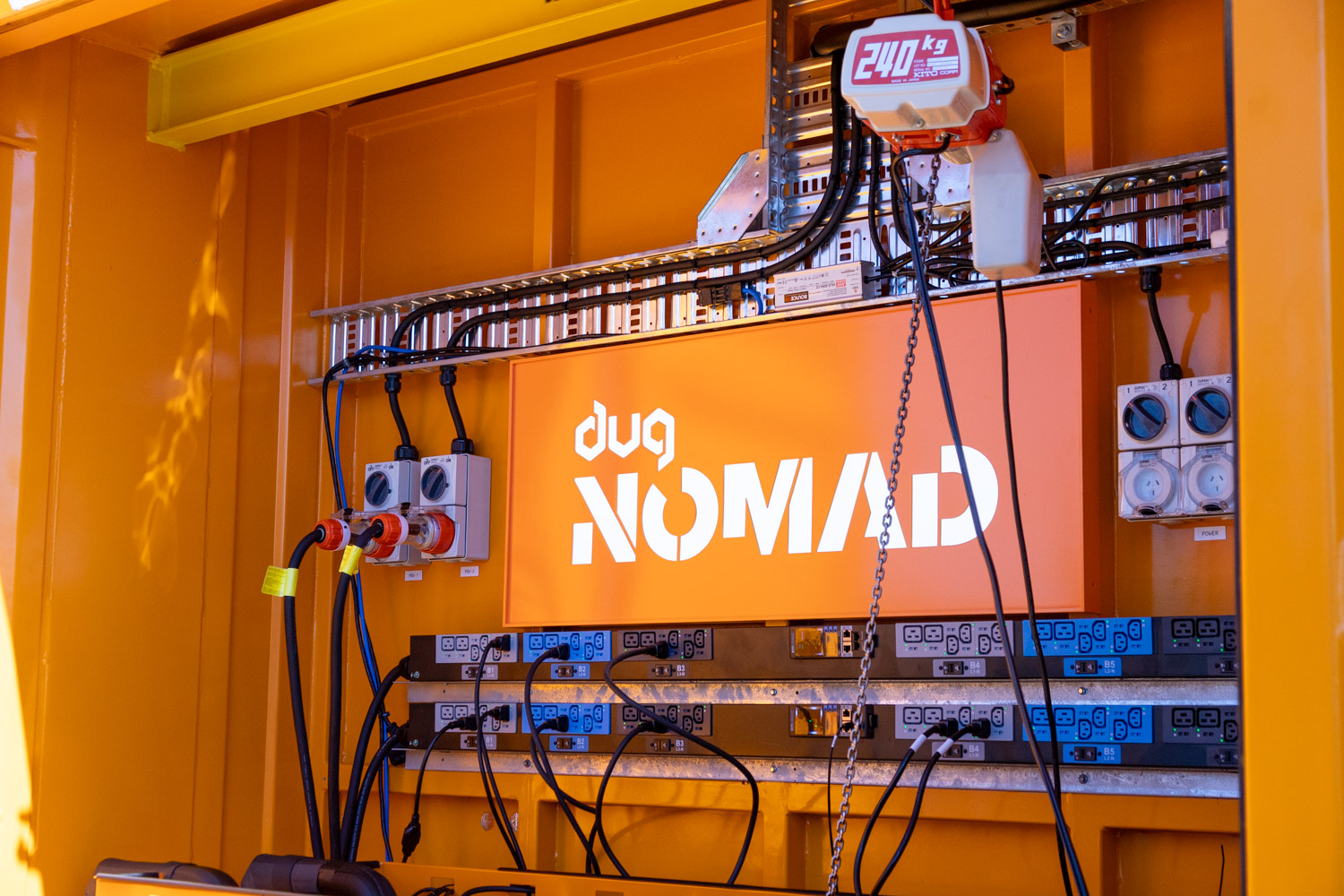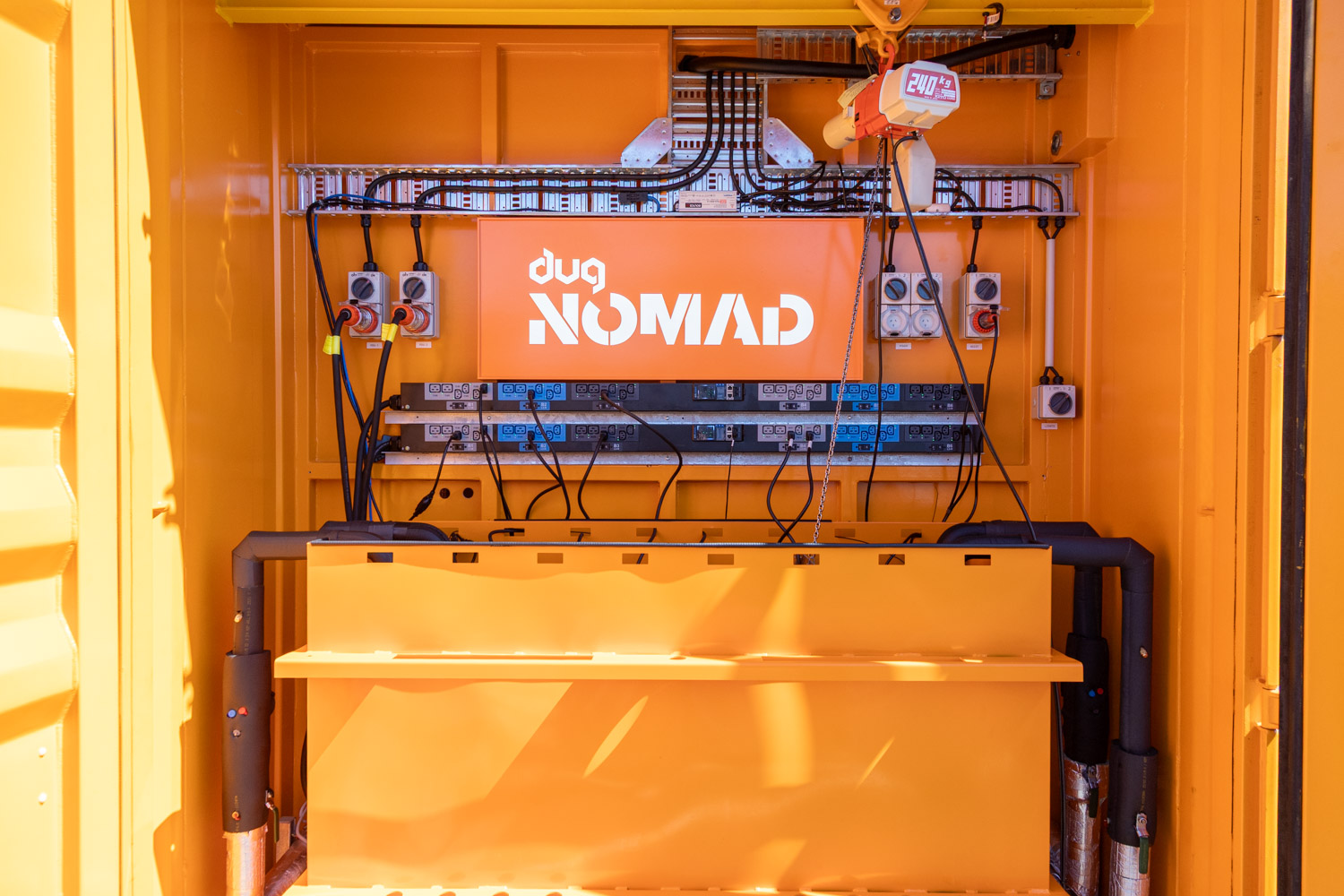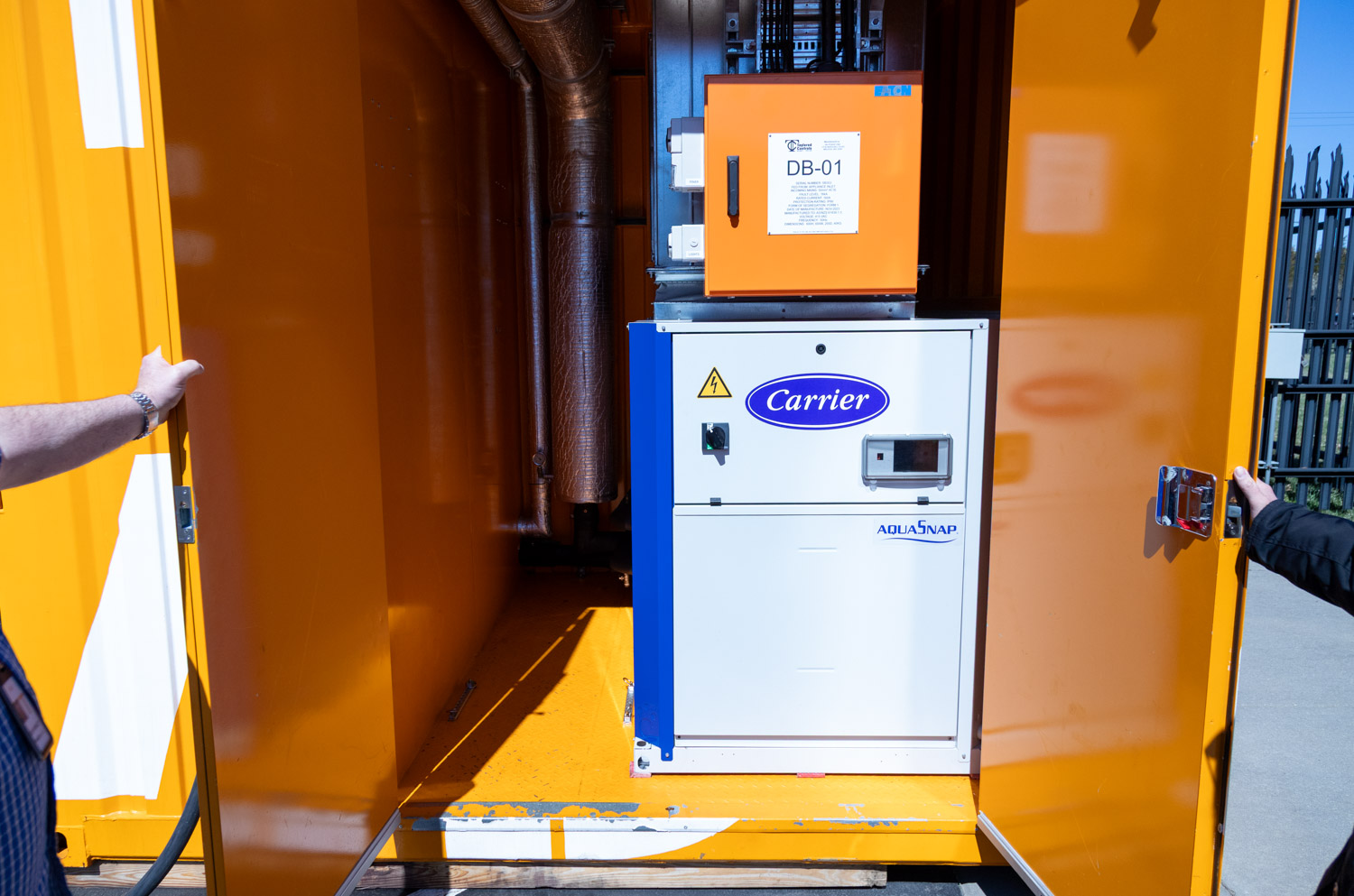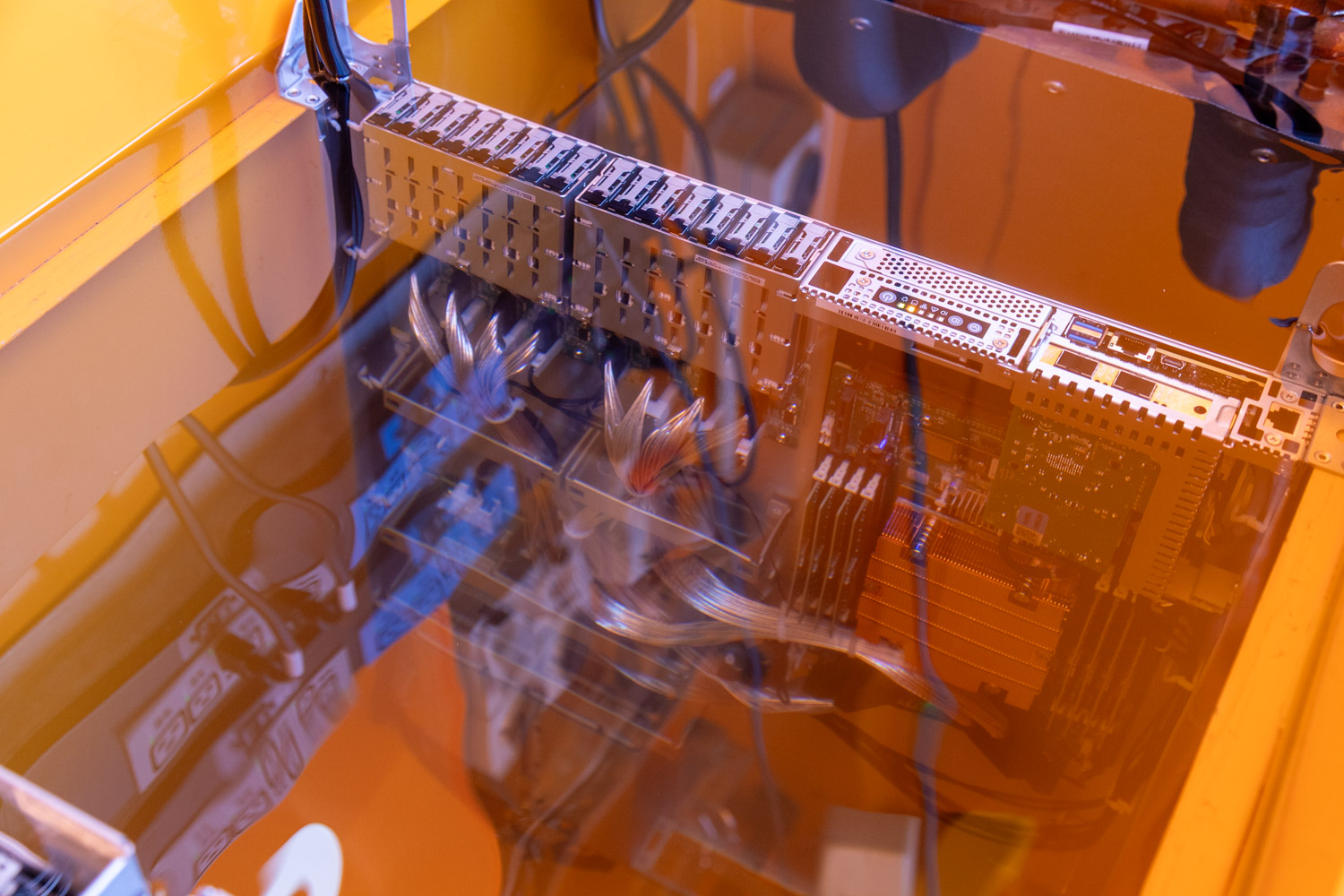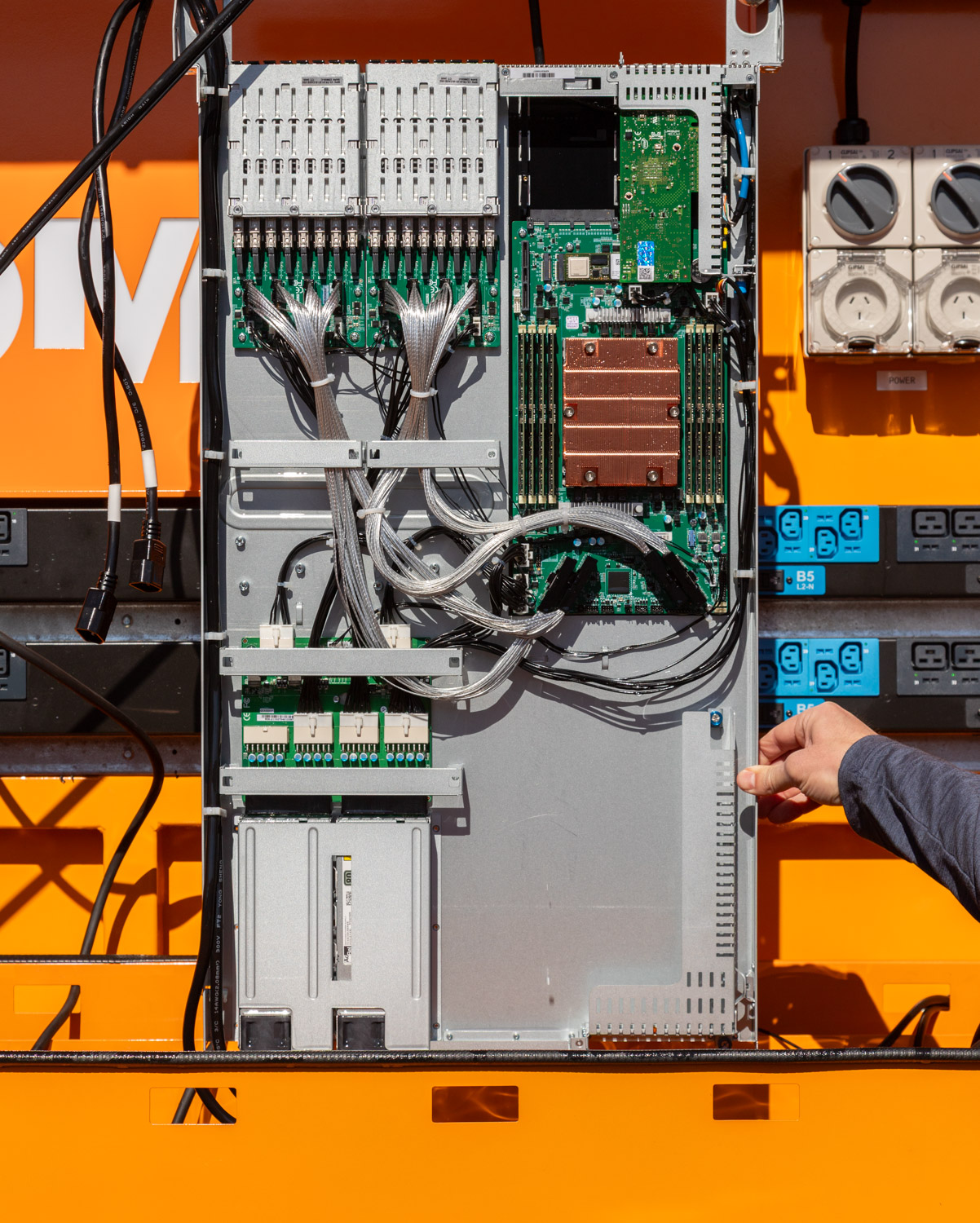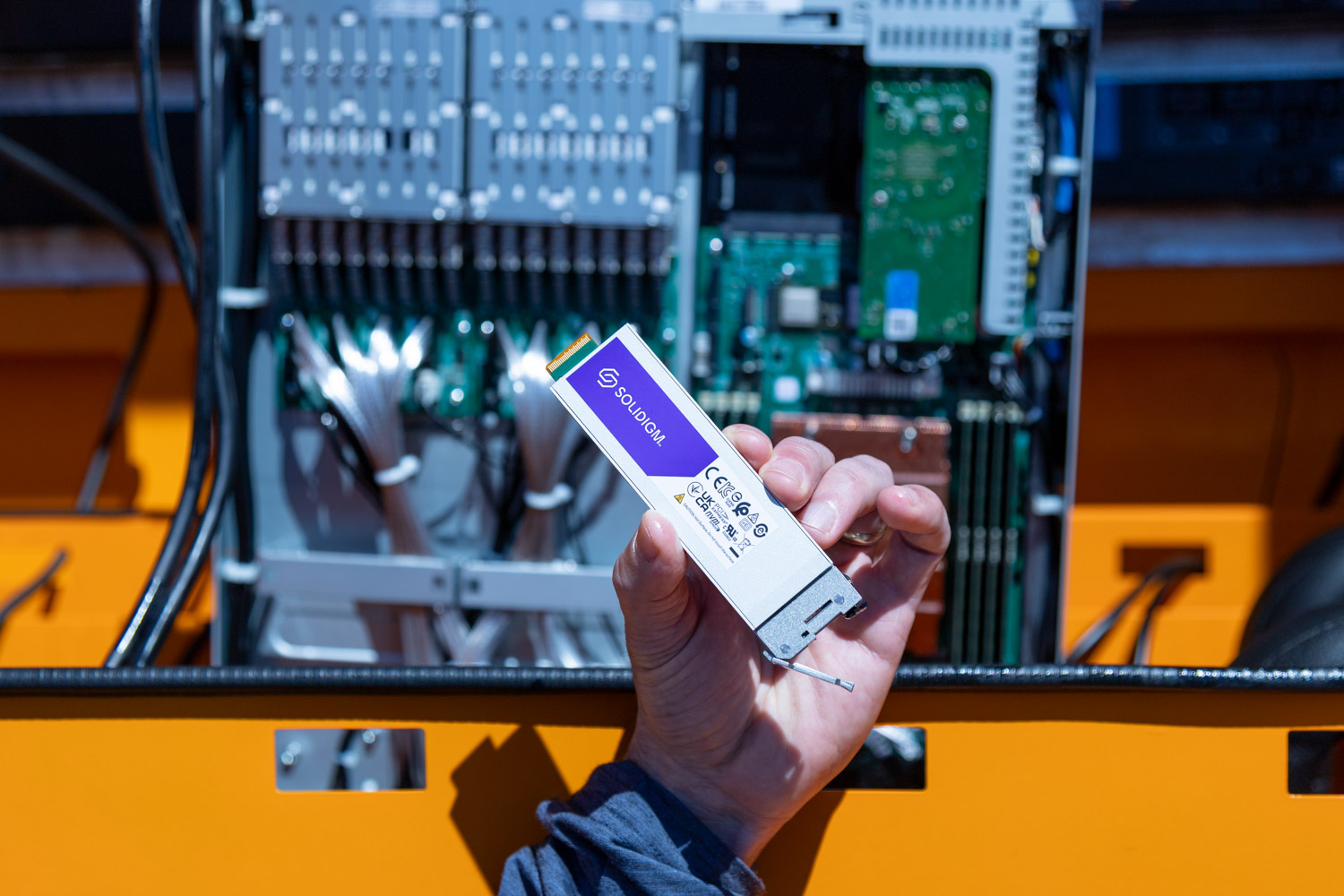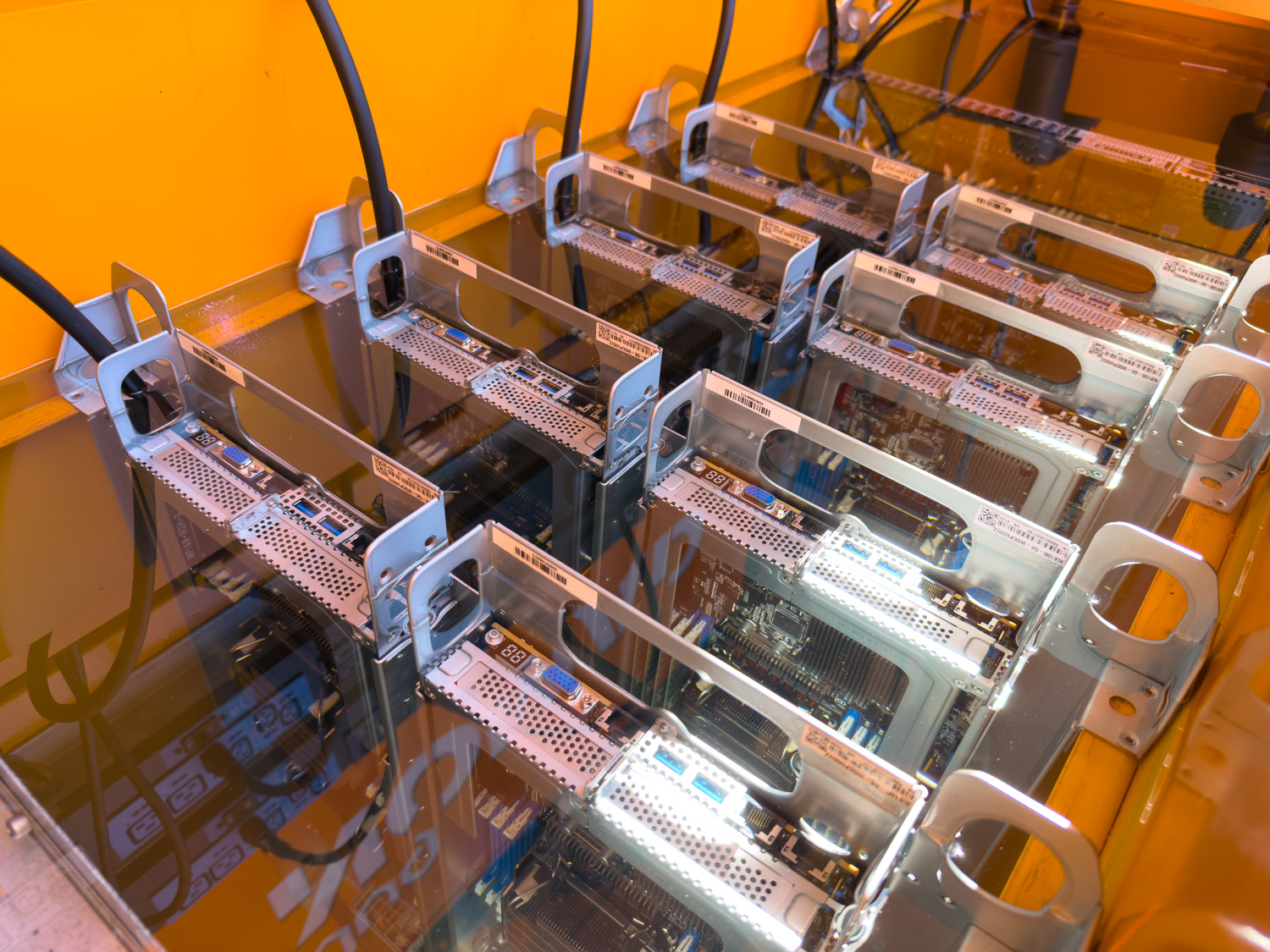DUG Nomad mobile data centers deliver immersion-cooled AI and HPC capabilities at the edge with Hypertec servers and Solidigm SSDs.
The DUG Nomad is a rugged, modular data center engineered to bring AI and high-performance computing (HPC) directly to the edge, no matter how remote or extreme the environment. Housed in standard-sized shipping containers, Nomad systems offer rapid deployment and plug-and-play capability, allowing organizations to process data right where it’s generated.
DUG’s proprietary immersion-cooling technology is central to its effectiveness. Hardware components are immersed in specialized dielectric fluid, drastically enhancing energy efficiency, reducing maintenance overhead, and significantly prolonging hardware lifespan. This approach enables sustained AI/HPC workloads in harsh environments and ensures consistent performance by efficiently managing thermal conditions critical to high-intensity tasks.
To get hands-on with this mobile data center, we traveled to Washington, DC, where ADACEN hosted a live deployment of the Nomad 10. On-site, we explored how immersion-cooled compute, dense storage, and efficient heat management deliver data center capabilities right at the edge.
DUG Nomad — Mobile Data Center To Go!
The DUG Nomad is designed for versatility and rapid deployment. It features a robust, self-contained enclosure explicitly tailored for easy transport and quick setup. Its rugged construction ensures reliable operation in extreme conditions (from arid deserts to research vessels), where traditional infrastructure deployment would be challenging or impossible. Once delivered, the Nomad can be operational within hours, allowing immediate computational, AI, and HPC capabilities precisely where needed.
Central to the Nomad’s technical advantage is its immersion cooling system, DUG Cool. DUG Cool immerses computing hardware directly into a specialized dielectric fluid. In this case, the Nomad uses a data center oil from Castrol, the same Castrol you know from the automotive segment. Castrol’s specialized oils enhance immersion cooling efficiency, optimizing heat transfer and ensuring long-term hardware reliability.
This approach efficiently manages thermal load by uniformly dissipating heat, allowing processors, GPUs, and even storage to operate at optimal performance levels without overheating or throttling. Beyond temperature regulation, immersion cooling protects components from environmental factors such as dust, moisture, oxidation, and corrosion—common threats in harsh deployments—significantly reducing maintenance overhead and improving overall reliability.
One of the standout engineering feats of the Nomad is how it handles heat within a fully enclosed mobile environment. The immersion tank absorbs heat from all internal components, CPUs, GPUs, RAM, and storage, and circulates it through two integrated heat exchangers at either end of the 26U rack. From there, a closed liquid loop circulates the heated fluid to the rear of the container, where a Carrier AquaSnap Air-Cooled Liquid Chiller expels the heat to the outside environment. This compact cooling architecture draws ambient air through slatted intake panels with protective mesh and vents hot air out the side. With just a 10°C delta between intake and exhaust, the Nomad can operate reliably in virtually any environment—anywhere on Earth short of an active volcano.
DUG Nomad units are available in scalable configurations of 10, 20, and 40-foot containers, accommodating a broad range of computing demands. The Nomad we explored was the 10-foot variety. The larger containers allow more immersion tanks, increasing the data center footprint. The Nomad 10 you see here offers a usable space of 26 rack units. Given the improved density of immersion-cooled servers, this may be sufficient for many use cases. For those who need more, the larger containers come into play.
Hypertec Immersion-Born Servers
Supporting the Nomad’s mission at the edge requires purpose-built servers, not modified air-cooled units. Hypertec’s immersion-born Ciara Trident servers are engineered from the ground up for immersion cooling environments and feature a fanless design. This boosts power efficiency and opens the door to greater hardware density within these tanks.
Hypertec immersion-cooled servers stand out due to their fanless design, which drives most of the power efficiency gains immersion servers offer. Another interesting design element with these servers is that all storage, I/O, and power connections are thoughtfully positioned at the front (top) of each server, making access and routine maintenance straightforward. Cables are engineered for immersion cooling, remaining flexible and easy to manage. Many other key components, designed specifically for immersion, were developed by Hypertec. Additionally, Hypertec offers specialized heatsinks that support various oil viscosity ratings, giving customers immersion fluid flexibility.
For situations requiring more than simple hot-swap maintenance, servers can be conveniently extracted from the tank by hand if it’s one of the smaller Hypertec blade units. A small built-in crane system inside the Nomad is available for larger storage servers and GPU servers.
Solidigm – Ahead of the Liquid Curve
Thinking about the use cases for edge AI in a system like the Nomad, it’s easy to get locked in on the importance and efficiency of the compute and GPU servers. Part of the allure of this solution, though, is the ability to collect and analyze data at the extreme edge, as a direct line back to the data center may not be possible or terribly effective. Solidigm is a leader in SSD density, enabling organizations to achieve remarkable storage capacities of up to 122.88TB. That means up to nearly 2PB in a compact 1U Hypertec storage server server footprint.
This density advantage becomes especially critical within immersion-cooled environments like the DUG Nomad, where physical space is highly constrained, and every rack U counts. Nomad customers can significantly maximize their storage footprint per U by leveraging Solidigm’s ultra-dense storage solutions, leaving valuable tank capacity available for GPU servers. This strategic balance of dense, efficient storage and powerful computing resources maximizes edge deployments’ overall performance and capability, making Solidigm’s dense SSDs a cornerstone for advanced, space-optimized data center designs.
That said, should customer demands require more performant storage, Solidigm has answers with the new D7-PS1010 SSD line. These drives leverage a PCIe Gen5 interface, delivering substantial improvements in throughput and latency, crucial for real-time data analytics and demanding AI workloads. While we’re talking about immersion cooling here, Solidigm is well ahead on the liquid cooling curve. They recently introduced the the world’s first liquid-cooled enterprise solid-state drives and late last year, were discussing the impact SSD power states can have on the overall power consumption of liquid-cooled servers.
Conclusion
The DUG Nomad exemplifies the future of mobile, immersion-cooled data centers, delivering reliable, high-performance compute, GPUs, and storage wherever data is generated. By combining DUG’s proven immersion technology (they consume over 400 immersion tanks for their own data center) with purpose-built Hypertec servers and Solidigm’s ultra-dense flash storage, this platform embodies what’s possible at the edge. Whether deployed in remote deserts, on ships, or in urban environments, the Nomad brings data center-class performance to places traditional infrastructure can’t reach.
If you’re attending Data Centre World this week, don’t miss the opportunity to see this mobile data center ecosystem in action. Visit the DUG Technology and Hypertec booths to learn how immersion cooling, dense compute, and scalable storage are shaping the next generation of edge and AI/HPC infrastructure.
This report is sponsored by Solidigm. All views and opinions expressed in this report are based on our unbiased view of the product(s) under consideration.
Engage with StorageReview
Newsletter | YouTube | Podcast iTunes/Spotify | Instagram | Twitter | TikTok | RSS Feed

